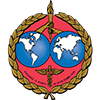History of Orthopaedics
Dr Masaki Watanabe (1911-1995) – The Father of Modern Arthroscopy
 Gandhi Nathan Solayar
Gandhi Nathan Solayar
Arthroscopic surgery is an indispensable procedure and the cornerstone of Orthopaedic sports surgery. The benefits of minimally invasive surgery and early return to function have revolutionised the treatment of common joint injuries and disabilities. In this brief article, we look back at the contributions of Professor Masaki Watanabe, who through his tireless work will forever be remembered as the Father of Modern Arthroscopy.

Dr Masaki Watanabe
Dr Watanabe was a Japanese surgeon born in Nagano, Japan in 1911. He completed his undergraduate studies at Tokyo Imperial University in 1937. Following this, he served and furthered his surgical studies at Tokyo University under the supervision of Professor Kenji Takagi; one of the first surgeons to utilise endoscopic techniques for surgery of the knee. During the years of the Second World War, Dr Watanabe’s studies were interrupted as he served the Japanese Imperial Army as an intelligence officer.
Following the war, Dr Watanabe became the director of the Orthopaedic Surgery department at Tokyo Teishin Hospital in 1947 where he further improved on early arthroscopic designs pioneered by his mentor, Prof Takagi. He continued the serial modifications of subsequent arthroscopes beginning with the No.13 arthroscope, being a 4mm scope derived from an earlier paediatric cystoscope.
His initial live arthroscopies were performed on animal models and he has been known to describe an equine ankle which resembled a human knee “upside down”. His first recorded arthroscopy on a human patient was the removal of a giant cell tumour from the suprapatellar pouch in 1955. He obtained colour photographs and showed a video presentation of his arthroscopic procedure at the SICOT congress held in Barcelona in 1957. Despite presenting numerous times at international symposia both in Europe and North America in the late 50s, it was not received wholeheartedly at the time when it was still preferred for most knee surgeries to be performed as open procedures.
In 1958, he developed the famous No. 21 arthroscope which became the standard in arthroscopic procedures in the decades following. Initial designs utilised an incandescent light source with a 4.9mm diameter scope and wide-angle lens giving a 100° field of view. He performed the first arthroscopic meniscectomy in the world in 1962 as related by one of his students, Prof Hideshige Moriya (who trained under Dr Watanabe from 1973 to 1975). In 1967, Dr Watanabe exchanged the incandescent light source for a new and better fiber optic source producing the No.22 arthroscope. At one point in 1970, he even designed a 2mm Ultra-thin scope (No.25) which was the basis of the “needlescope”.
From the 1960s onwards, increased interest in arthroscopic surgery, particularly from North America, brought many surgeons to Japan to train under the tutelage of Dr Watanabe. One of his early students was the famous Dr Robert W. Jackson of Toronto, Canada, who trained at Tokyo Teishin Hospital in 1964 and observed surgery performed by Dr Watanabe and his assistant at the time, Dr Hiroshi Ikeuchi. Dr Jackson subsequently became a founding member and vice-President of the International Arthroscopy Association. Another pioneer of arthroscopy from the United States, Dr Richard O’Connor, trained by Dr Watanabe in Tokyo in 1971 was the first to perform arthroscopic partial meniscectomies in North America. Dr O’Connor subsequently became the designing surgeon of the standard arthroscope used worldwide in collaboration with the Richard Wolf Medical Instruments Corporation.
Another famous orthopaedic surgeon, Dr Samuel Ward Casscells from the Thomas Jefferson Medical College in Philadelphia, collaborated with Dr Watanabe and obtained the first arthroscope to be used in North America. With the help of Dr Watanabe, he developed the standard arthroscopic technique and described this in English for the first time in 1971. This was published in the American edition of the Journal of Bone and Joint Surgery in the paper entitled “Arthroscopy of the Knee Joint. A Review of 150 cases”. Subsequent promotion of the procedures and techniques of Dr Watanabe helped introduce and popularise arthroscopic surgery to the western world with a multitude of surgeons coming to Japan to train under his expert guidance. The International Arthroscopic Association (the forbearer of the International Society of Arthroscopy, Knee Surgery and Orthopaedic Sports Medicine, ISAKOS) was founded in 1974 with Dr Watanabe as its first President.
Dr Watanabe remained forever passionate about the art of arthroscopy and he frequently told his students that the No.21 arthroscope was one of his own grandchildren. A generation of world renowned arthroscopic surgeons owe their training to the diligence and kind tutelage of Dr Watanabe.
This great surgeon eventually retired from his busy clinical and teaching practice. In October 1995, the famous surgeon succumbed to complications following treatment of a hip fracture. We are indebted to the pioneering work of Dr Watanabe and the world of arthroscopic surgery will always remember this distinguished man.
- DeMaio M. Giants of Orthopaedic Surgery: Masaki Watanabe MD. Clin Orthop Relat Res. 2013 Aug; 471(8): 2443-2448
- Jackson RW. A History of Arthroscopy. Arthroscopy. 2010 Jan;26(1):91-103
- O’Connor RL, Shahriaree H. O;Connors Textbook Of Arthroscopic Surgery. Philadelphia: J.B.Lippencott, Ó1992 pg 1-6















